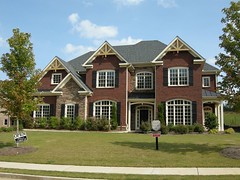Two years ago I thought it would be good to post a little about Earnest Money… how much is enough, and what is it for? It is actually a pretty common question, especially among first time home buyers. But, even those that have been through the process a few times still often have a few questions, both buyers and sellers.
What is Earnest Money…
Basically, it is like a little insurance policy that the buyers are serious. Buyers offer Earnest Money (EM) in order to show that they are serious (earnest) about the offer they are submitting. In offering the EM, they are saying “we intend to follow through on this offer”. The EM is credited to the buyer at the closing table, either toward their down payment or their closing costs. If the sale doesn’t happen, and the cause of the failure is the buyer, the EM usually serves as “Liquidated Damages“. In effect, it compensates the seller for the extra costs of removing their property from the market.
How much Earnest Money is enough?
A good rule of thumb is 1% of the purchase price. In most cases, the buyer will need to have a minimum of 3.5% at the closing table, so having less than a third of that wrapped up with the contract shouldn’t seem onerous. In some institutional sales (generally foreclosures), the seller requires Cash Buyers to put up 10%. Their thought is that if there is enough money in the bank to buy the property, coming up with a tenth of that shouldn’t be a problem.
Sellers always want to see more EM… Buyers usually want to use less.
What happens to the Earnest Money?
If the sale closes, the EM is credited to the buyer at the closing table. It goes toward closing costs, down payment or as a credit against the price (in any winning combination). In that regard, more EM isn’t a hardship for buyers… up to a point.
If the sale doesn’t close, then there are more possibilities… all are ruled by the purchase contract.
- If the property has an inspection issue, generally the EM is refunded to the buyer.
- If the buyer is unable to qualify for financing, the contract will state the time-lines that will determine if the buyer or seller gets the EM.
- If the buyer backs from the sale outside of the contract’s time-lines, the seller generally gets the EM.
- If the seller misrepresents the property, even after the Due Diligence period, the buyer may have a claim on the EM.
A couple of final thoughts…
There ARE costs for a seller in removing a property from the market. Seldom are they direct, though. But, by removing a property from the market for a sale that ultimately fails, the seller may lose out on a buyer that WOULD be able to fulfill the purchase contract. And, in many cases, the property may be stigmatized from going under contract and then coming back on the market… other buyers may assume that the reason the property was off the market was that there were inspection issues rather than financing issues on the part of the buyer.
As a bottom line, Earnest Money is an important, but often overlooked part of the initial offer, negotiations and the contract to purchase a home.










